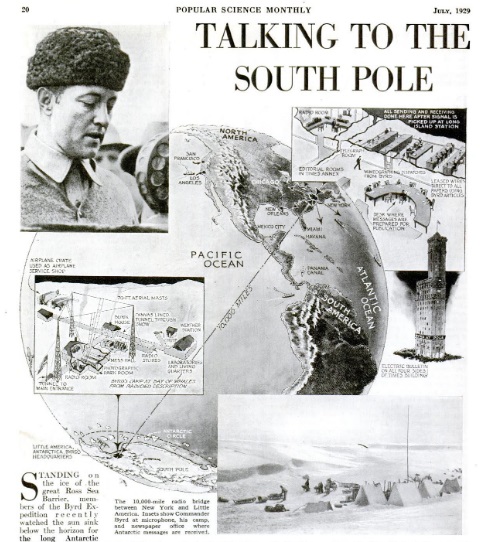 Ninety years ago this month, the July 1929 issue of Popular Science carried this graphic showing how daily news dispatches were consistently making it to the New York Times from Richard E. Byrd’s first Antarctic expedition. Since the ship left New York, more than 150,000 words had made their way from the expedition to eager news customers in the United States. The dispatches were received each night at 10:00 New York time, the largest being an 8500 word dispatch sent one night. At the receiving end, a radio operator was set up in the New York Times Annex building. A backup station at Woodside, Long Island, was also receiving, and in the cases where the signal couldn’t be heard in Manhattan, the message was quickly relayed via telegraph from Long Island.
Ninety years ago this month, the July 1929 issue of Popular Science carried this graphic showing how daily news dispatches were consistently making it to the New York Times from Richard E. Byrd’s first Antarctic expedition. Since the ship left New York, more than 150,000 words had made their way from the expedition to eager news customers in the United States. The dispatches were received each night at 10:00 New York time, the largest being an 8500 word dispatch sent one night. At the receiving end, a radio operator was set up in the New York Times Annex building. A backup station at Woodside, Long Island, was also receiving, and in the cases where the signal couldn’t be heard in Manhattan, the message was quickly relayed via telegraph from Long Island.
Within in hour, the story was going to press in New York, and was going over the wires to other papers throughout the world. After the news dispatches, personal messages from Commander Byrd and his men were sent. Then, a news summary was sent to the men in Antarctica.
At Byrd’s camp at Little America, Bay of Whales, the illustration here (based upon descriptions contained in those dispatches) appears to show a horizontal Delta Loop antenna at seventy feet.
